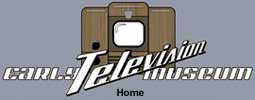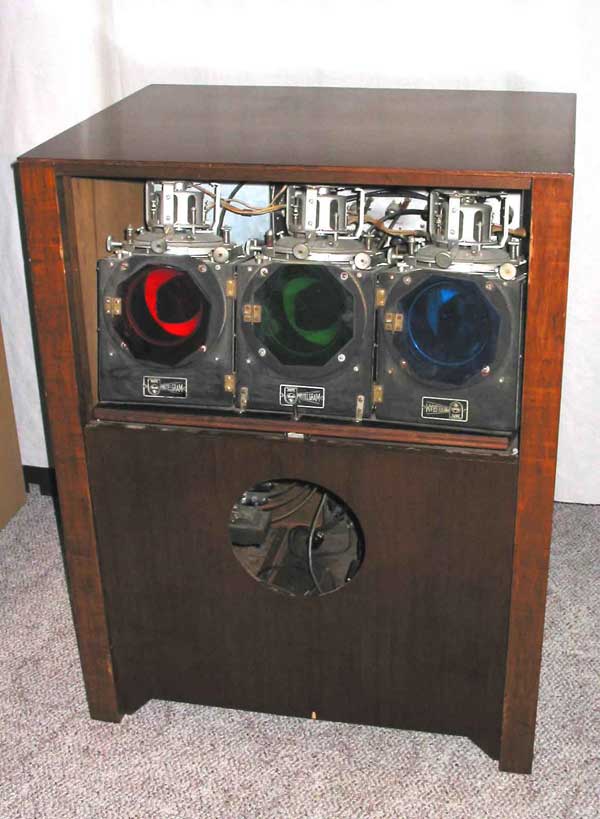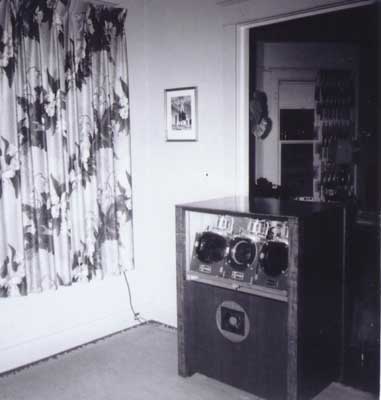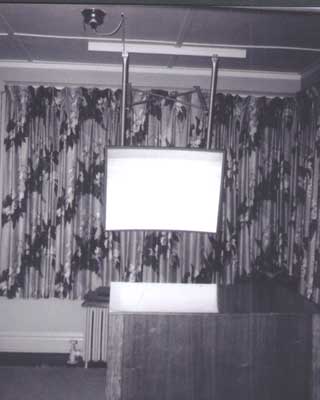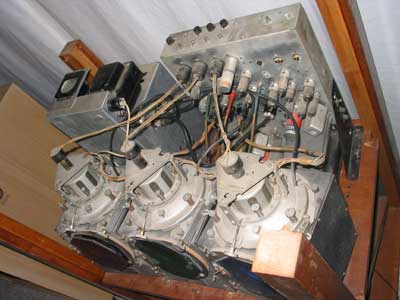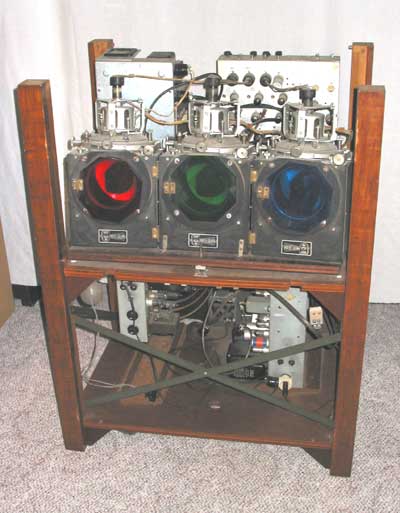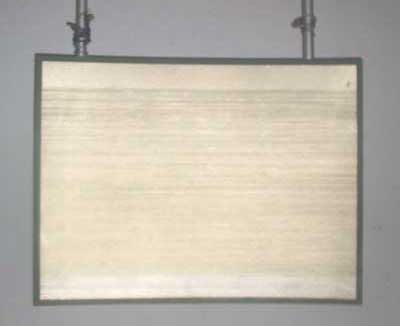Early Color Television Color Projection Set - 1955(click on picture for high resolution image) This set was built in 1955 by William K. Brookshier. It is similar to the set described in a 1955 Radio Electronics magazine article. It uses parts from a 1948 Admiral black and white TV set for the receiver portion, and three Norelco Protelgram projection assemblies, each with a lucite color filter in front of it. Mr. Brookshier made an elaborate notebook that described the construction of the set, and detailed modifications made up until the late 70s. The construction is very professional. The set was donated to the museum by Gwyn Jirka of Crystal Lake, Illinois. We received an email from Jack Albert with details of the set's history: Later, we received this letter from Mr. Brookshier. Here are pictures that came with the letter:
With the top off, the three projection assemblies are visible at the bottom of this picture. At the top right is the deflection chassis, and at the top left is the high voltage power supply for the projection tubes.
Here is a picture with the cabinet covers removed. At the bottom left is the low voltage power supply chassis. At the bottom right is the RF chassis.
This is the screen. It was designed to be mounted from the ceiling of the viewing room, and is about 48 inches wide.
|
